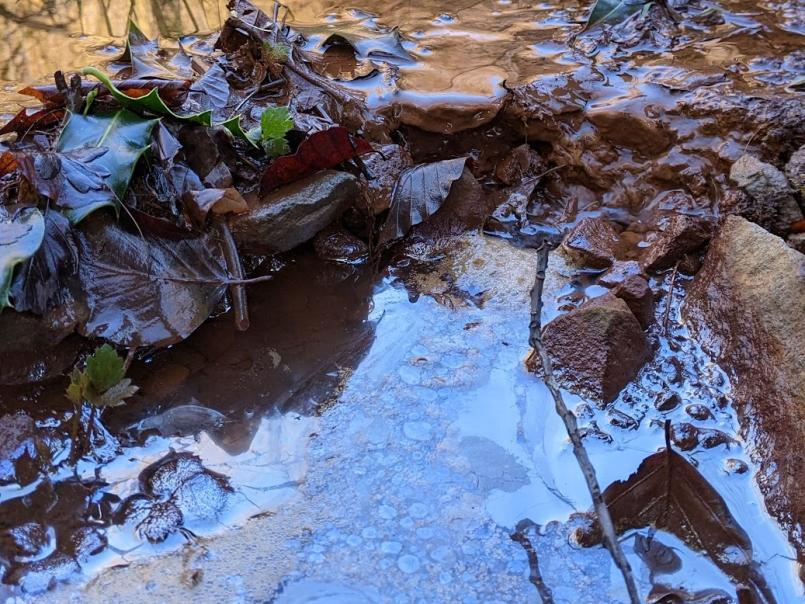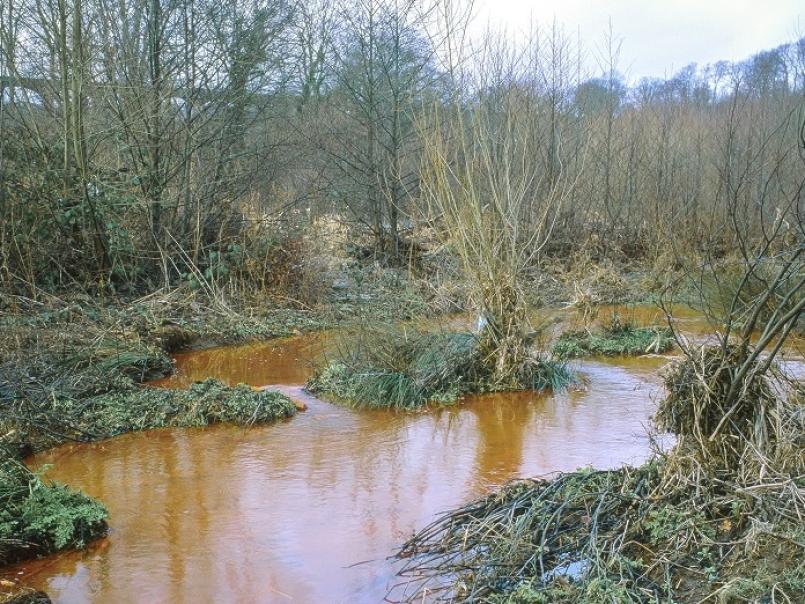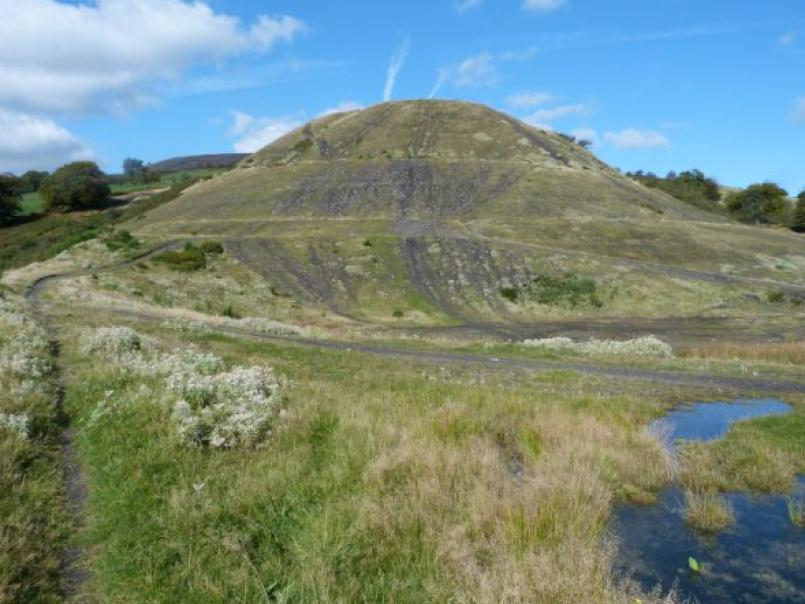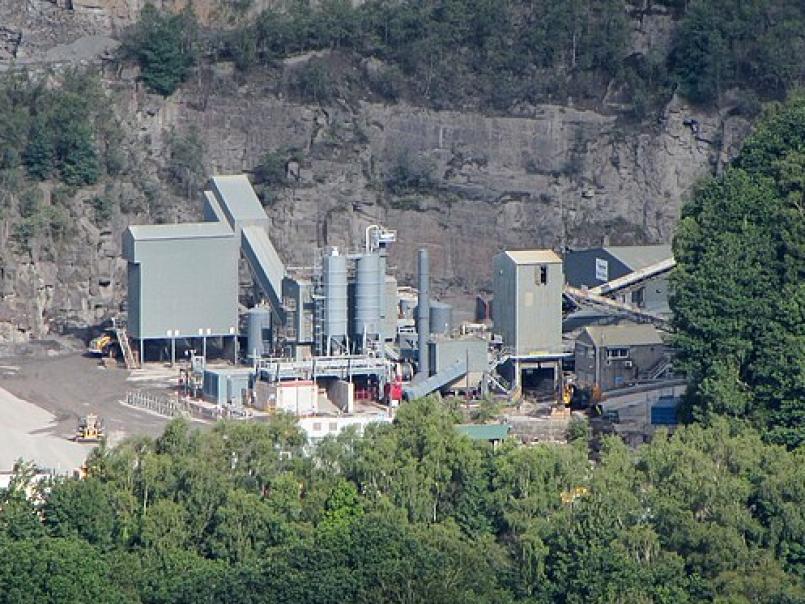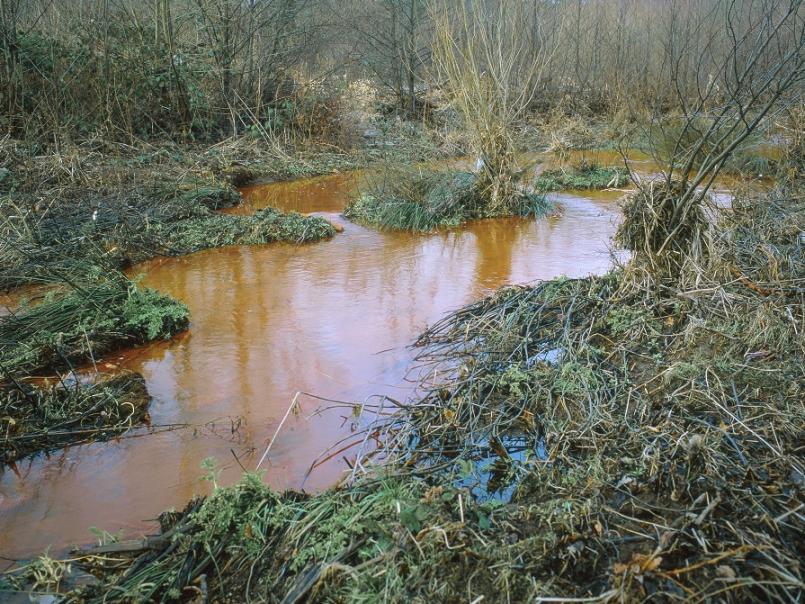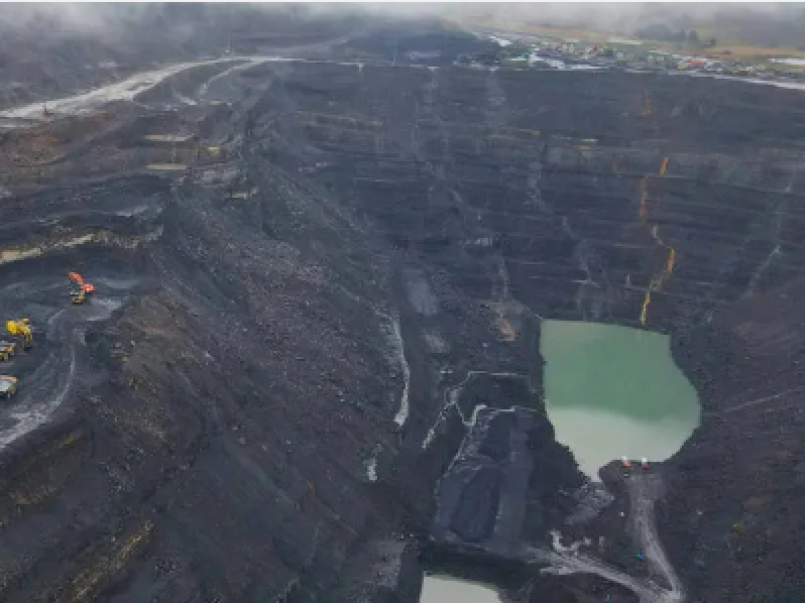Scratching the surface of Wales' toxic legacy
Published: 24 Mar 2025
Over the past year I’ve been finding out about contaminated land in Wales, alongside my team at Friends of the Earth Cymru. It has been an eye-opening experience as someone who grew up in south Wales but was never aware of the legacy of industrial work on my local area.
In the UK, we are becoming increasingly aware of the harmful consequences of our toxic legacy, thanks to a growing number of media stories, documentaries, podcasts and docudramas such as Netflix’s Toxic Town. I was interested in finding out the opinions of local communities in Wales about the impact of contaminated sites on their lives and what prospects there are for making these areas safe and compensating affected communities.
In February 2025 my colleagues and I met with local campaigners in Caerphilly to find out more about a quarry where Monsanto, a former American corporation, dumped toxic chemicals over half a century ago.
Monsanto in Wales
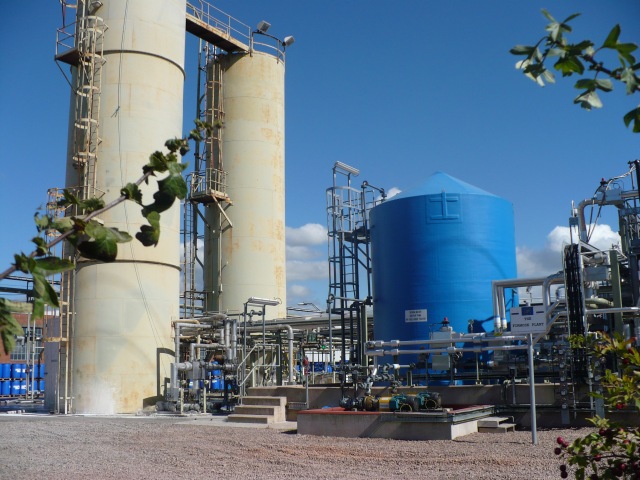
I first learnt about Monsanto’s work in the chemical industry at university when I was studying the ethics behind their ‘Feed the World’ campaign. This pushed genetically modified (GM) crops as a solution to food scarcity, which Monsanto blamed on our growing population.
However, Monsanto’s mistreatment of farmers and the overall failure of GM foods to produce the large yields that were promised clearly demonstrated that population was not a problem, but rather corporate greed. At that time, I had no idea that decades prior to the GM crop controversy, Monsanto had a heavy industrial presence in Wales, leaving behind a legacy of contaminated land.
Monsanto first opened their chemical factory in Newport in 1949 to expand operations in manufacturing chemical products - like weedkillers containing harmful substances like Polychlorinated Biphenyls (PCBs) - throughout the 1950s and 60s.
PCBs are a ‘forever chemical’, named accordingly due to their lasting nature in our environment. This means that although PCB production has been banned for decades, they are still found in our environment. PCBs are dangerous for both humans and animals. They have been shown to cause cancer and to have negative impacts on our immune, nervous, and endocrine systems.
Old quarry sites like Ty Llwyd in Caerphilly, Maendy and Brofiscin in Rhondda Cynon Taf, and many others were used as dumping grounds for the toxic waste produced in this factory. Officials at Monsanto were aware of the dangers of their products as early as 1937, but continued production until 1977. This means Monsanto was aware for a long time of the harm that dumping this toxic waste into old quarry sites would have on local communities - but the company carried on doing just that.
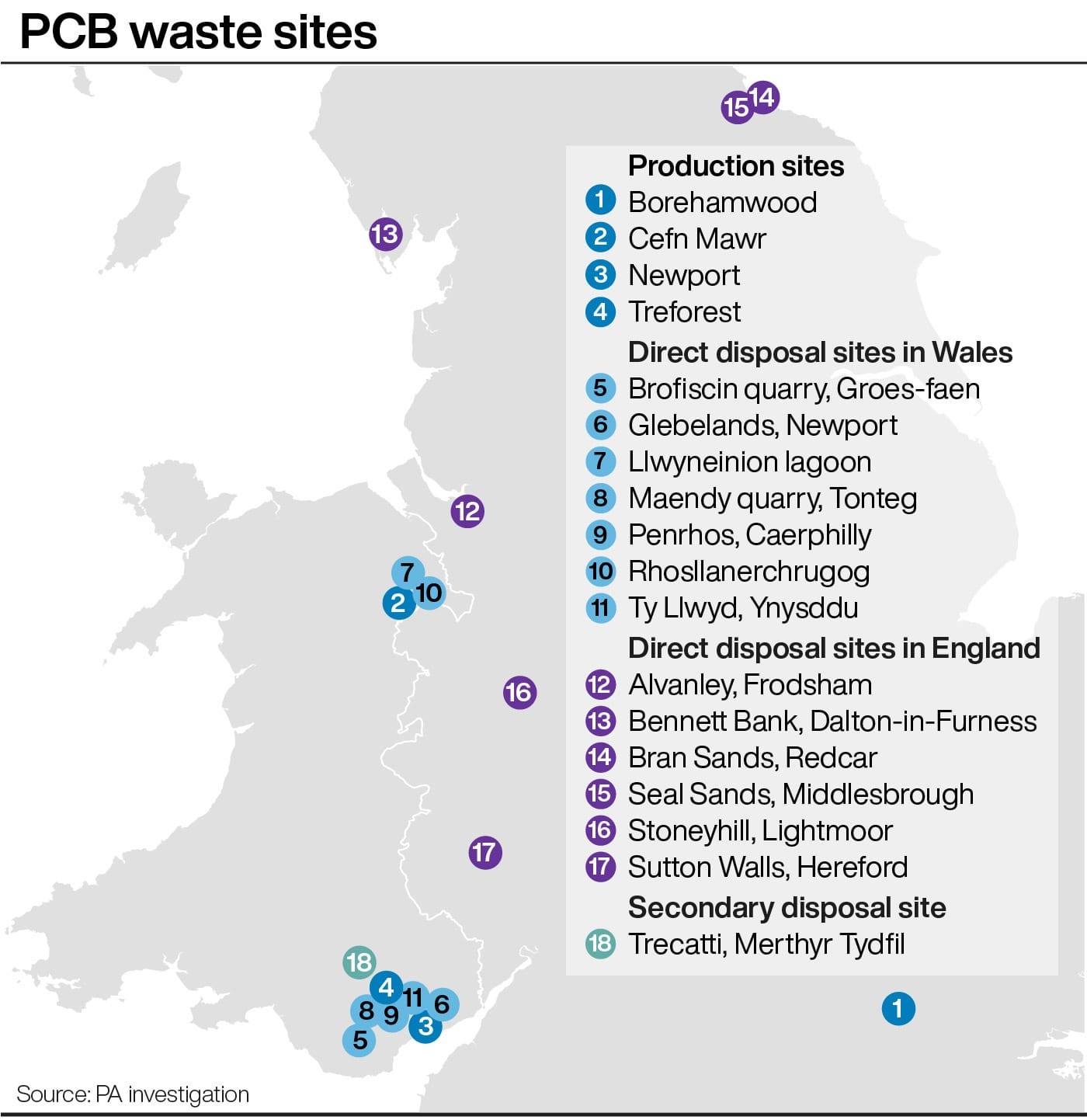
In 2011, environmental officials concluded that the leaking of harmful toxins from Brofiscin quarry posed a significant health risk and that Monsanto, along with fossil fuel firm BP and waste management company Veolia, was liable for this contamination. All three companies initially refused to cover the costs of remediation (taking action to clean up the sites and protect people or nature from harm), which amounted to £1.25 billion. And 3 years later when they finally agreed to foot the bill, they still denied liability. BP even responded to the Guardian saying they did not directly use the quarry but wanted to make a ‘goodwill contribution’ for clean up costs.
In the United States, Bayer, the company that bought Monsanto, faces 'billions in payouts for the decades old toxic mess.' In September 2024, for example, Los Angeles City Council settled with Monsanto for $35 million over PCBs in waterways. That's all well and good, but what about compensation for communities in Wales living close to other PCB toxic waste dumps? As you will see from the map above, Brofiscin is just one of many PCB dump sites.
Toxic valleys?
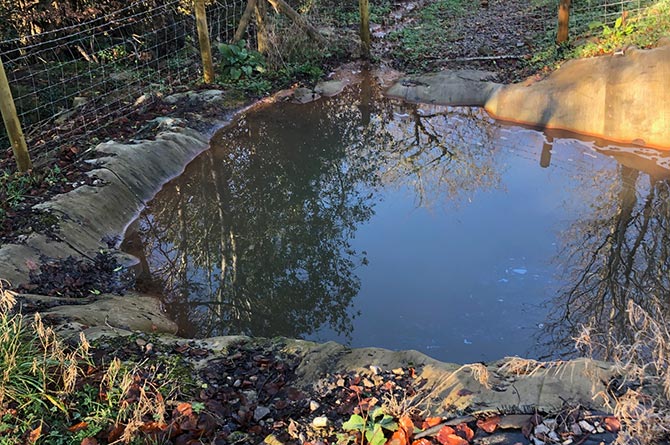
Another PCB waste site is Ty Llwyd in Ynysddu in the village of Ynysddu, which was the subject of a BBC podcast featuring Michael Sheen last year.
Leachate (liquid pollution) from this quarry continues to seep into local rivers, groundwater and soil, despite dumping ending over 50 years ago. The leachate from the quarry also may be running into the rivers Sirhowy and Ebbw.
During our visit to Caerphilly in February 2025, two local Caerphilly County Borough Council (CCBC) councillors Janine Reed and Jan Jones talked to us about the impact of this toxic waste dump on the lives of residents and local wildlife.
Due to its higher geographical location, the water runs down from the quarry into the neighbouring Pant-y-Ffynnon Community Woodland. Before local people realised that the site was toxic, they would often take their children and dogs there to enjoy the natural beauty of the valley.
In January 2023, leachate from Ty Llwyd leaked on to the road that bisects the quarry and the woodland, and in the following June, CCBC were issued a warning from Natural Resources Wales (NRW).
CCBC have now installed a metal fence around the site, CCTV and a ‘private property’ sign. The council maintain that the site doesn’t meet the definition of contaminated land because whenever the council test the site, they don’t find any evidence of PCBs. According to the councillors, this is because “the council aren’t testing in the right places, and the testing is not sensitive enough”.
However, testing by Greenpeace and Dave Megson, a forensic scientist from Manchester Metropolitan University (for the BBC podcast, Buried: The last Witness (episode 6) revealed dangerous levels of PCBs. According to Dr Megson, the soil sample from the woodland in Ynysddu was 140 times higher than average.
Local people are concerned that the quarry could be contributing to cancer cases in the village. For instance, one lady pointed out that 4 dogs on same street, who were walked regularly on the woodland, have now died of pancreatic cancer. Of course, it is impossible to prove that the quarry is responsible for the perceived higher rates of cancer, but what cannot be denied is that people are worried. It's important to listen to these concerns and investigate.
The photos above show different entrances to the same community woodland neighbouring the Ty Llwyd site.
The impact of toxic dumping is still present in the community’s collective memory as residents have come to the councillors recalling how the woodland where they played as children would look like a ‘lake of thick black jelly’ and being relieved to not have been trapped inside! I was really shocked at the lack of care and transparency from local authorities in not only neglecting the toxic state of the land but also failing to warn people about the dangers.
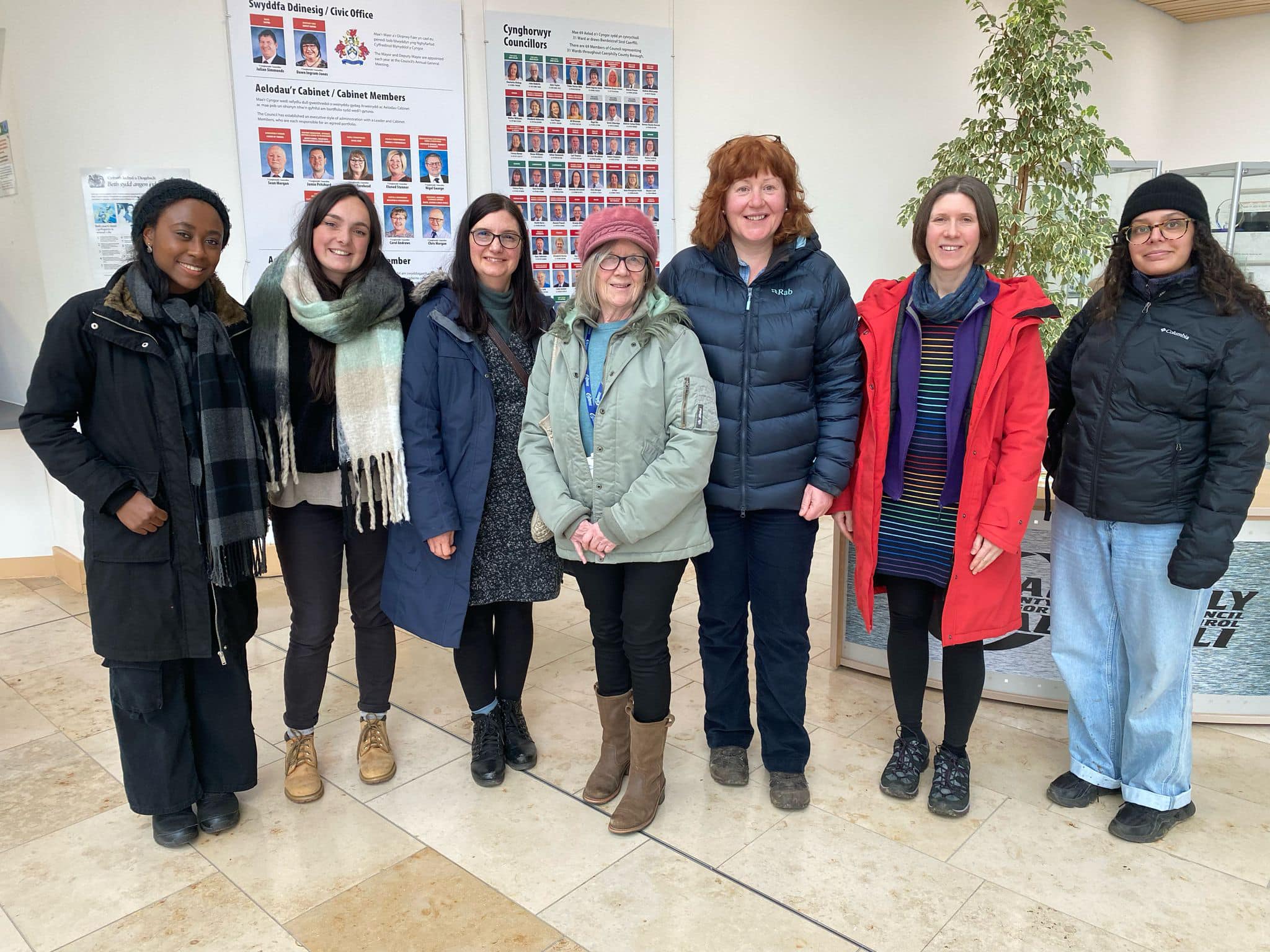
Putting matters right
The health and wellbeing of people and wildlife should be our number one priority.
People have a right to know if they are living next to a dangerous contaminated land site and impacted communities should have a right of redress - this is a public health issue, and a social and environmental justice issue.
Dangerous contaminated land sites across Wales could already be affecting our health and damaging the natural world. The truth must not stay buried.
In December, the UK parliament's Welsh Affairs Committee announced a call for evidence into Wales’s industrial past (read our response here). This is a step in the right direction to address decades of environmental, health and social injustice suffered by communities.
The Environmental Principles and Biodiversity Bill that should be introduced to the Senedd this year promises a new environmental governance body for Wales. This is a unique opportunity to address the issue of contaminated land, including legacy sites, and start putting matters right.

